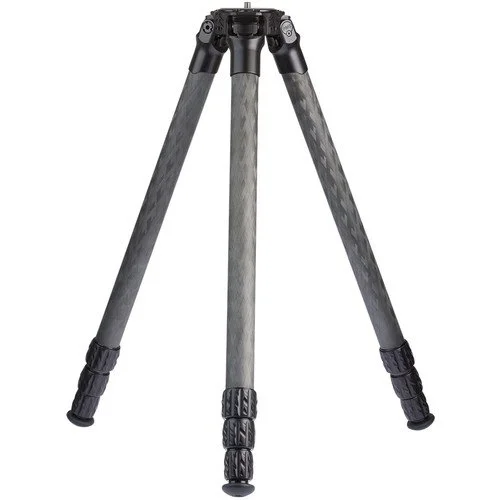ProMediaGear BH-1 Ballhead and TR344 Tripod Review for Wildlife Photography
Today, I’m reviewing a TR344 Tripod and the BH-1 Ballhead from ProMediaGear.
ProMediaGear (PMG) is a family-owned and operated boutique manufacturer of high-quality tripods, monopods, brackets, ballheads, and gimbals.
The TR344 and BH-1 is a premium tripod and ballhead designed for the most discerning user. If you have read any of my prior gear reviews, including my review of the BH-50 Ballhead, you’ll know that I’m most interested in testing gear out in the field, which is exactly what I did with this kit.
Big thank you ProMediaGear for loaning this demo unit. Note: this review is not sponsored and these thoughts are my own.
TR344 Core Tripod
The TR 344 Core Tripod is one of four configurations of “3-series” tripods from PMG. This designation equates to a tripod that is middle-ground size and weight-wise in the sphere of tripods, but still capable of supporting some of the heaviest loads you could imagine (60lb), whilst still being compact enough for hiking and travel. The 20” collapsed height of this model in particular is important because it falls within international carry-on baggage dimensions. As a 6’ person, I find the 344’s height to be essentially perfect. For me, it hits the sweet spot of having good working height without a center column, but not being so excessively tall or bulky as to be burdensome to carry, even while hiking. The TR344 is essentially their middle size offering in the series. If additional height is desired, one has the option of adding a center column (at the sacrifice of some stability), or choosing the TR344 long. The lightest and shortest configuration is the TR343.
A table showing the alternative configurations is below:
Some key standout features shared by all of the 34 series tripods include all aluminum apex and leg locks, 10x layer carbon fiber legs, 3 angle adjustment stops of 22.5,50,and 84 degrees, tension adjustable legs, integrated steel spikes, built-in spirit level, and a modular apex design. Next, I’ll dive into the build quality and my impressions of it during use.
Build Quality
The 34 series tripod is a true professional-grade product. All of the anodized metal parts feel incredibly solid, adjustments are super smooth, the carbon fiber looks and feels very high quality, and once setup, the tripod feels incredibly rigid and inspires confidence. The tripod’s premium price point is matched with precision machining, tight tolerances, and details that translate to a tool that feels smooth and reliable to work with. With so many tripods on the market, it’s hard to fully appreciate the benefits of a premium product until it is in hand.
The knurled leg locks are metal without any rubber coating, which is good because there is no rubber to wear out, but it’s a little more slippery and cold surface to grab onto. I expect the anodizing to wear off over time as the locks rub into each other in the collapsed position.
There is not really much else to say about the build quality, other than it feels like a premium product that will withstand many years of use and abuse.
Operation
The PMG is one of the most modular tripod designs I have seen. The user has the option of choosing between a compact apex, flat apex, bowl adapter, or center column, and swapping in between them relatively easily. The compact TRS344 apex is useful for keeping the tripod dimensionally as small as possible, while the bowl system is ideal for landscape panoramas, gimbal shooting, or video work, and the basic flat top platform is good for bigger ballheads. To swap between the compact and flat top apex, simply undo the small Allen screw on the leg joint, loosen the bolt on the opposite side, then gently push out the retaining pin from the joint. The optional 75mm bowl system is even easier to install, and requires only removing four bolts holding the top plate in place to replace it with a bowl adapter.
The apex angle locks at the top of the legs are a unique design. They are designed to either be pulled out using two fingers, or pushed out using an index finger from underneath the lock. Unlike some other tripod angle locks, these do not have any spring-loaded ratcheting mechanism that falls into one of the preset angle grooves. I am on the fence about this design and whether I think it’s a pro or a con. On the one hand, it’s nice that you can simply pull out the lock and adjust freely without it unintentionally locking back into place. However, it does require paying more attention to ensure the lock is seated in one of the grooves, otherwise the gear could take a tumble.
One nice feature of the PMG tripod that may please video shooters is that the leg locks take only a 1/4 turn to disengage, and the legs fall to the ground by gravity alone. This is not universally true of tripods but is greatly beneficial because it means not having to spend time pulling out each of the leg sections apart during use, and it also makes it easier to quickly set the tripod height. Simply hold the tripod in front of you at the desired height, undo all of the leg locks with one hand, let the legs fall to the ground, then tighten the locks a quarter turn. The leg locks also have a rubber gasket to prevent salt water, dirt, etc. from gumming up the threads.
Once setup, the tripod feels extremely rigid, with minimal flex that is sometimes seen in lesser quality tripods. The wide leg splay and beefy carbon tubes inspire confidence, and I would see no problem putting heavier telephoto lenses on top. Some tripods have a more upright leg angle which can make them feel a bit more tippy if bumped, but that’s not the case here.
Fans of shooting low to the ground will appreciate that this tripod can get seriously low, just 3.8” from the ground. In my mind, this is a big benefit of shooting with a tripod that is tall enough to use without a center column, in that low angle shooting is possible.
Additional nice touches on the tripod include a hook under the apex for hanging a bag to increase stability, 1/4-20 ports on the apex (note: the compact apex does not have these ports) that could accept accessories like monitors, iPad stands, and lights, and spikes that are integrated into the rubber feet so you never have to worry about accidentally leaving them home (just don’t forget to remove the spikes or put them into checked baggage when flying)
In summary, the TR344 is a pleasure to use, is very well machined, all of the operations feel smooth, and it’s incredibly rigid and dampened from vibrations. It is essentially all that you could ask for in an all-around tripod at the highest rung quality-wise. Anyone with some of the bigger glass (really anything larger than a 70-200/2.8) would really appreciate using this tripod.
The only drawback that I could see is that even though it is lightweight for its size class, it is heavier than some of the more travel-centric tripods on the market. Hopefully PMG has a 2-series tripod on the horizon which would be more ideally suited for ultralight hiking.
BH-1 “Sputnik” Ballhead
PMG BH-1 Ballhead
In the sphere of available tripod head options, the ballhead is probably the most versatile and straightforward choice. Ballheads allow for very quick adjustments and no setup time, and unmatched flexibility. When using a gimbal, you must either walk with camera attached to the tripod and gimbal so that you can be ready at a moments notice (not much fun), or you must take the time to properly mount and balance the camera, loosen the pan and tilt knobs, and correct for the horizon using the leveling base prior to shooting. With a ballhead, you can simply slap the camera onto the arca plate, loosen the ballhead, then lock it down on the subject. As someone who is often on the move and going between handheld shooting and tripod shooting, the ballhead often feels more nimble to work with.
The main drawback of a ballhead in general is that there is no counterbalance, so the camera can flop over dangerously if you forget to properly tighten the head down. It can also be a bit tiring during long shoots loosening and tightening the ballhead over and over again, whereas on a gimbal the camera is effectively weightless. For situations where you’re mostly staying in one place, the gimbal is clearly the better choice. However, for spontaneous moments with stationary or slower subjects, or macro subjects, or for people who often swap between handheld and tripod shooting like I do, the ballhead really shines. The ballhead setup is also often lighter than most gimbal setups, and certainly more dimensionally compact. And, you can always add a “sidekick” gimbal to the equation.
Like the TR344 tripod above, everything about the BH-1 exudes quality. The panning is very smooth, the lock knob has a reassuring feel to it, and there are some nice features like an integrated bubble level. There’s nothing worse than a ballhead that once locked down, drifts off the subject when you let go of the camera, or with enough pressure, starts to sag with gravity when you are not looking. Thankfully, this is one area where the quality shines through with the BH-1. You can have some serious weight pulling down on the head off-axis, but if locked down, it doesn’t move. Anyone using large telephoto lenses or video rigs would surely appreciate this.
The BH-1 is unique ballhead given its irregular horizontal design. Unlike other ballheads which have a single or maybe two slots for dropping the camera down into portrait orientation, this ballhead essentially allows you to do that at any time. In practice, this means you can easily adjust the camera downward or upward at odd angles. Changing the angle is easy because of another unique trait, the humungous rotary lock knob on the side of the ballhead. The nice thing about this lock knob is that because it is so big, it’s super easy to lock tightly with gloves on, and the grooves on the knob 100% by feel. I find it very easy to grab onto the lock knob even while I’m looking through the camera to make small adjustments. Though not an astrophotography shooter, I’d have to imagine astro shooters would also appreciate this while working in the dark. Those who do not need the benefits offered by the horizontal orbit design might consider the lighter weight BH-50 instead.
Overall, I would say that the BH-1 deserves a hard look by anyone interested in a top-quality ballhead that has no trouble supporting heavy rigs. The BH-1 is a smooth operator that has no sag or creep even when it is weighed down. My review of these products may be short and sweet, but that is a good thing because top-end products that simply work.
To purchase either the TR344 Tripod or BH-1 Ballhead, head over to ProMediaGear’s website:
Purchase the TR344 Carbon Fiber Tripod
Purchase the BH-1 Ballhead
An elk shot taken with the BH-1 and TR344 combo.










